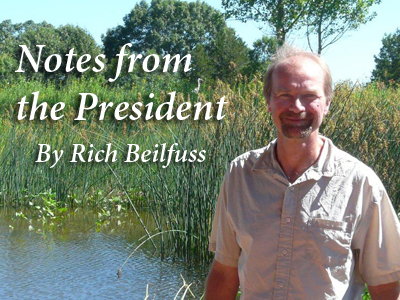We found 376 results for your search.
 Riding on Bette Midler’s wings, The National Audubon Society soared last night, Jan. 17, at the Plaza Hotel in New York. For the first time, the organization awarded two of the nation’s most prestigious environmental honors on the same night: the inaugural Dan W. Lufkin Prize for Environmental Leadership and the Audubon Medal.
Riding on Bette Midler’s wings, The National Audubon Society soared last night, Jan. 17, at the Plaza Hotel in New York. For the first time, the organization awarded two of the nation’s most prestigious environmental honors on the same night: the inaugural Dan W. Lufkin Prize for Environmental Leadership and the Audubon Medal.
George Archibald, co-founder of the International Crane Foundation, received the first Lufkin Prize and its $100,000 award, and philanthropist Louis Bacon received the esteemed Audubon Medal.
 When I think about the conservation challenges we face in the coming century, my thoughts invariably turn to food, water, and energy. How will we feed 9 billion people and still maintain healthy landscapes for cranes and other life we hold dear? How will we water thirsty cities and farmlands without sacrificing life-supporting rivers and wetlands? Can we meet the global demand for electricity without devastating our land, water, air…and climate?
When I think about the conservation challenges we face in the coming century, my thoughts invariably turn to food, water, and energy. How will we feed 9 billion people and still maintain healthy landscapes for cranes and other life we hold dear? How will we water thirsty cities and farmlands without sacrificing life-supporting rivers and wetlands? Can we meet the global demand for electricity without devastating our land, water, air…and climate?
 The following are notes from my October 27-November 8, 2012 visit to North Korea. I was the guest of North Korea’s foremost ornithologist, Dr. Park U Il of the State Academy of Sciences (SAOS), with whom ICF has been working since my first visit in 2008. From our base at the Pyongyang Hotel, we traveled to three important sites for Red-crowned Cranes.
The following are notes from my October 27-November 8, 2012 visit to North Korea. I was the guest of North Korea’s foremost ornithologist, Dr. Park U Il of the State Academy of Sciences (SAOS), with whom ICF has been working since my first visit in 2008. From our base at the Pyongyang Hotel, we traveled to three important sites for Red-crowned Cranes.
 Six young Whooping Cranes were released Monday at Horicon National Wildlife Refuge (NWR) in Dodge County, Wis. The cranes are part of the Direct Autumn Release (DAR) project conducted by the Whooping Crane Eastern Partnership (WCEP), an international coalition of public and private organizations that is reintroducing this highly imperiled species in eastern North America, part of its historic range.
Six young Whooping Cranes were released Monday at Horicon National Wildlife Refuge (NWR) in Dodge County, Wis. The cranes are part of the Direct Autumn Release (DAR) project conducted by the Whooping Crane Eastern Partnership (WCEP), an international coalition of public and private organizations that is reintroducing this highly imperiled species in eastern North America, part of its historic range.
 Six young Whooping Cranes began their ultralight-led migration September 28th from the White River Marsh State Wildlife Area in Green Lake County, Wis. This is the 12th group of birds to take part in a project led by the Whooping Crane Eastern Partnership (WCEP), an international coalition of public and private groups that is reintroducing this highly imperiled species in eastern North America, part of its historic range.
Six young Whooping Cranes began their ultralight-led migration September 28th from the White River Marsh State Wildlife Area in Green Lake County, Wis. This is the 12th group of birds to take part in a project led by the Whooping Crane Eastern Partnership (WCEP), an international coalition of public and private groups that is reintroducing this highly imperiled species in eastern North America, part of its historic range.
 An in-depth study warns that new and proposed dams on Southern Africa’s largest river are ill-prepared to withstand the shocks of a changing climate. The result could be uneconomic dams that under-perform in the face of more extreme drought, and more dangerous dams that have not been designed to handle increasingly damaging floods.
An in-depth study warns that new and proposed dams on Southern Africa’s largest river are ill-prepared to withstand the shocks of a changing climate. The result could be uneconomic dams that under-perform in the face of more extreme drought, and more dangerous dams that have not been designed to handle increasingly damaging floods.
 At the North American Crane Workshop in 2008, ICF had the pleasure to host our long-term colleague, Inga Bysykatova from the Institute of Biological Problems of the Cryolithozone (IBPC) in Yakutia, Russia. Inga had been studying Sandhill Cranes that migrated from Texas, across Alaska, to breed in the tundra in far eastern Russia.
At the North American Crane Workshop in 2008, ICF had the pleasure to host our long-term colleague, Inga Bysykatova from the Institute of Biological Problems of the Cryolithozone (IBPC) in Yakutia, Russia. Inga had been studying Sandhill Cranes that migrated from Texas, across Alaska, to breed in the tundra in far eastern Russia.
 Six Whooping Crane chicks arrived last week at Horicon National Wildlife Refuge in Dodge County, Wis. The cranes are part of the Direct Autumn Release project conducted by the Whooping Crane Eastern Partnership, an international coalition of public and private organizations that is reintroducing this highly imperiled species in eastern North America, part of its historic range.
Six Whooping Crane chicks arrived last week at Horicon National Wildlife Refuge in Dodge County, Wis. The cranes are part of the Direct Autumn Release project conducted by the Whooping Crane Eastern Partnership, an international coalition of public and private organizations that is reintroducing this highly imperiled species in eastern North America, part of its historic range.
 The International Crane Foundation (ICF) was recently awarded a $71,410 Museums for America Program Grant from the Institute of Museum and Library Services (IMLS) to design and implement a management system for its collection of more than 35,000 digital assets.
The International Crane Foundation (ICF) was recently awarded a $71,410 Museums for America Program Grant from the Institute of Museum and Library Services (IMLS) to design and implement a management system for its collection of more than 35,000 digital assets.
 In mid-June we enjoyed another magical night at the International Crane Foundation. An Evening with the Cranes drew friends from across the country to share wine, food, and song from the crane regions of the world, under a beautiful summer sky.
In mid-June we enjoyed another magical night at the International Crane Foundation. An Evening with the Cranes drew friends from across the country to share wine, food, and song from the crane regions of the world, under a beautiful summer sky.
 Riding on Bette Midler’s wings, The National Audubon Society soared last night, Jan. 17, at the Plaza Hotel in New York. For the first time, the organization awarded two of the nation’s most prestigious environmental honors on the same night: the inaugural Dan W. Lufkin Prize for Environmental Leadership and the Audubon Medal.
Riding on Bette Midler’s wings, The National Audubon Society soared last night, Jan. 17, at the Plaza Hotel in New York. For the first time, the organization awarded two of the nation’s most prestigious environmental honors on the same night: the inaugural Dan W. Lufkin Prize for Environmental Leadership and the Audubon Medal.
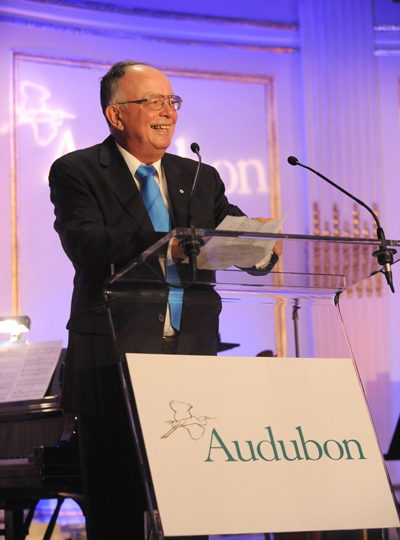
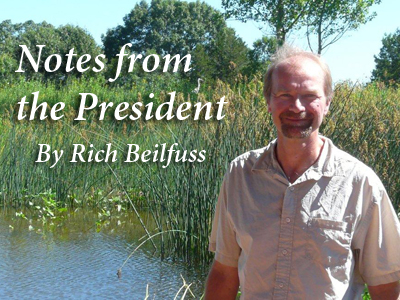
 When I think about the conservation challenges we face in the coming century, my thoughts invariably turn to food, water, and energy. How will we feed 9 billion people and still maintain healthy landscapes for cranes and other life we hold dear? How will we water thirsty cities and farmlands without sacrificing life-supporting rivers and wetlands? Can we meet the global demand for electricity without devastating our land, water, air…and climate?
When I think about the conservation challenges we face in the coming century, my thoughts invariably turn to food, water, and energy. How will we feed 9 billion people and still maintain healthy landscapes for cranes and other life we hold dear? How will we water thirsty cities and farmlands without sacrificing life-supporting rivers and wetlands? Can we meet the global demand for electricity without devastating our land, water, air…and climate?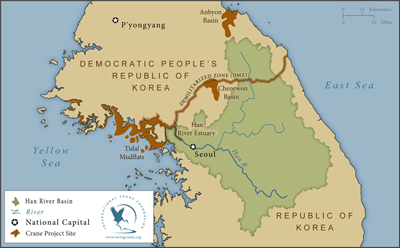
 The following are notes from my October 27-November 8, 2012 visit to North Korea. I was the guest of North Korea’s foremost ornithologist, Dr. Park U Il of the State Academy of Sciences (SAOS), with whom ICF has been working since my first visit in 2008. From our base at the Pyongyang Hotel, we traveled to three important sites for Red-crowned Cranes.
The following are notes from my October 27-November 8, 2012 visit to North Korea. I was the guest of North Korea’s foremost ornithologist, Dr. Park U Il of the State Academy of Sciences (SAOS), with whom ICF has been working since my first visit in 2008. From our base at the Pyongyang Hotel, we traveled to three important sites for Red-crowned Cranes.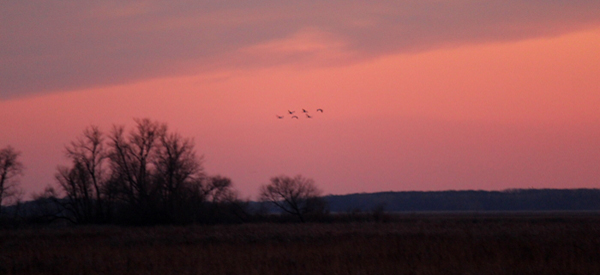
 Six young Whooping Cranes were released Monday at Horicon National Wildlife Refuge (NWR) in Dodge County, Wis. The cranes are part of the Direct Autumn Release (DAR) project conducted by the Whooping Crane Eastern Partnership (WCEP), an international coalition of public and private organizations that is reintroducing this highly imperiled species in eastern North America, part of its historic range.
Six young Whooping Cranes were released Monday at Horicon National Wildlife Refuge (NWR) in Dodge County, Wis. The cranes are part of the Direct Autumn Release (DAR) project conducted by the Whooping Crane Eastern Partnership (WCEP), an international coalition of public and private organizations that is reintroducing this highly imperiled species in eastern North America, part of its historic range.
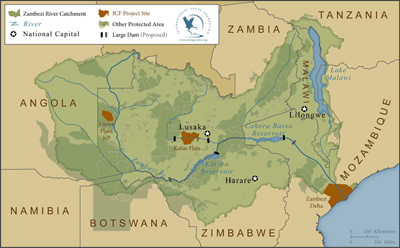
 An in-depth study warns that new and proposed dams on Southern Africa’s largest river are ill-prepared to withstand the shocks of a changing climate. The result could be uneconomic dams that under-perform in the face of more extreme drought, and more dangerous dams that have not been designed to handle increasingly damaging floods.
An in-depth study warns that new and proposed dams on Southern Africa’s largest river are ill-prepared to withstand the shocks of a changing climate. The result could be uneconomic dams that under-perform in the face of more extreme drought, and more dangerous dams that have not been designed to handle increasingly damaging floods.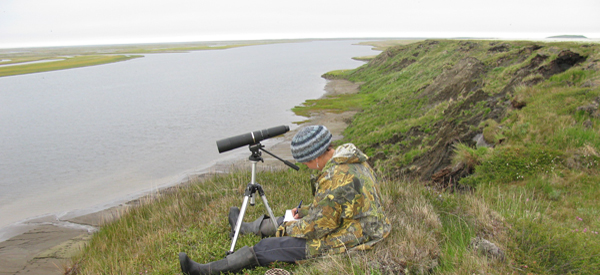
 At the North American Crane Workshop in 2008, ICF had the pleasure to host our long-term colleague, Inga Bysykatova from the Institute of Biological Problems of the Cryolithozone (IBPC) in Yakutia, Russia. Inga had been studying Sandhill Cranes that migrated from Texas, across Alaska, to breed in the tundra in far eastern Russia.
At the North American Crane Workshop in 2008, ICF had the pleasure to host our long-term colleague, Inga Bysykatova from the Institute of Biological Problems of the Cryolithozone (IBPC) in Yakutia, Russia. Inga had been studying Sandhill Cranes that migrated from Texas, across Alaska, to breed in the tundra in far eastern Russia.
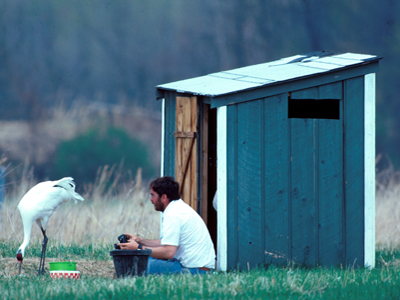
 The International Crane Foundation (ICF) was recently awarded a $71,410 Museums for America Program Grant from the Institute of Museum and Library Services (IMLS) to design and implement a management system for its collection of more than 35,000 digital assets.
The International Crane Foundation (ICF) was recently awarded a $71,410 Museums for America Program Grant from the Institute of Museum and Library Services (IMLS) to design and implement a management system for its collection of more than 35,000 digital assets.